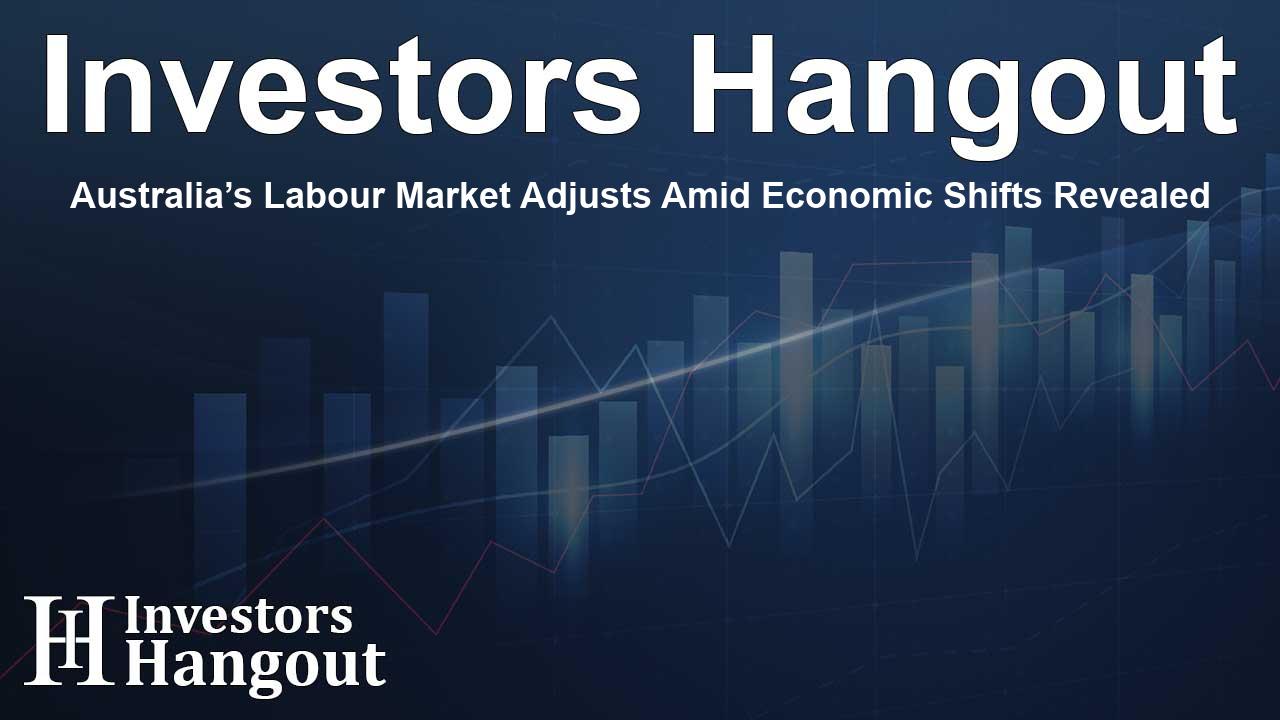Australia’s Labour Market Adjusts Amid Economic Shifts Revealed

Australia's Labour Market Adjustment
Australia's central bank has recently observed a notable shift in the labour market dynamics. As interest rates rise, the balance between demand and supply is changing, leading to a gradual adjustment in employment conditions. This shift comes as officials at the Reserve Bank of Australia (RBA) announce that while current labour market conditions remain relatively tight, they are moving towards a more balanced state.
Current State of Employment
During a recent address in Sydney, RBA's Assistant Governor, Sarah Hunter, highlighted that while the labour market still shows tighter conditions than what is considered full employment, there are unexpected strengths in hours worked and participation rates. Although strong employment conditions prevailed, the labour market has shown signs of easing, with unemployment rising to 4.2% in July, moving away from last year’s low of 3.5%.
Potential Future Changes
The RBA anticipates that this gradual easing in the labour market is likely to continue, primarily driven by the growing population outpacing employment creation and companies beginning to reduce hours worked. Hunter noted, "Overall, our current assessment indicates that the recent softening of labour market conditions has resembled earlier mild downturns in Australia’s economic history."
Interest Rates and Economic Performance
The central bank has raised interest rates significantly, going up 425 basis points to reach a 12-year high of 4.35%. This move was aimed at controlling inflation but has not deterred the economy from generating jobs at an impressive rate. As a result, policymakers maintain that a rate cut this year remains unlikely, even though market forecasts reflect an 84% probability for a potential cut in December.
Labour Participation Rates
One notable aspect mentioned by Hunter was the surprising rise in Australia's participation rate, reaching record highs. This trend stands in contrast to most other economies, and it can be attributed to factors such as increased female participation in the workforce and a steady rise in the number of individuals holding multiple jobs.
Impact of Migration on Employment
Another contributing factor to employment growth is the rebound in migration levels, which has effectively enhanced both the supply and demand for labour in Australia. This influx not only supports the economy but also leads to a more dynamic and competitive job market.
Wage Growth Trends
As the adjustments in the labour market unfold, there are indications that wage growth may have peaked and could be set for further declines. Hunter pointed out that recent trends suggest a gradual shift in wage dynamics, which typically follows suit with employment changes.
Conclusion
In summary, Australia's labour market is currently at a transitional phase as high interest rates are influencing economic activities. The path ahead appears to be one of cautious optimism, with predictions of continued adjustments in workforce conditions. The interplay of migration, labour participation, and job growth will remain central to navigating this evolving landscape.
Frequently Asked Questions
What is the current unemployment rate in Australia?
The current unemployment rate in Australia stands at 4.2%, up from a low of 3.5% reached last year.
Why has the RBA raised interest rates?
The RBA has raised interest rates to combat inflation, which has led to a significant increase in rates to a 12-year high of 4.35%.
How is the labour market expected to change?
The labour market is expected to continue easing gradually as population growth exceeds employment gains.
What factors are driving increased labour participation?
Increased female workforce participation and a rise in the number of people holding multiple jobs are key drivers of higher labour participation rates.
Will there be a rate cut from the RBA?
While a rate cut is currently seen as unlikely, there is an 84% market probability predicting that a cut may occur in December.
About The Author
Contact Addison Perry privately here. Or send an email with ATTN: Addison Perry as the subject to contact@investorshangout.com.
About Investors Hangout
Investors Hangout is a leading online stock forum for financial discussion and learning, offering a wide range of free tools and resources. It draws in traders of all levels, who exchange market knowledge, investigate trading tactics, and keep an eye on industry developments in real time. Featuring financial articles, stock message boards, quotes, charts, company profiles, and live news updates. Through cooperative learning and a wealth of informational resources, it helps users from novices creating their first portfolios to experts honing their techniques. Join Investors Hangout today: https://investorshangout.com/
The content of this article is based on factual, publicly available information and does not represent legal, financial, or investment advice. Investors Hangout does not offer financial advice, and the author is not a licensed financial advisor. Consult a qualified advisor before making any financial or investment decisions based on this article. This article should not be considered advice to purchase, sell, or hold any securities or other investments. If any of the material provided here is inaccurate, please contact us for corrections.
